ICSA22- bioluminescent micro-architecture
examines the 3D printing of biomaterials induced by luminescent and calcifying bacteria for circular design applications. The project is an interdisciplinary research enquiry sitting at the intersection of architecture, design and microbiology led by Soft Matters, in collaboration with CITA, 3d.FAB & Soletanche Bachy.
Architects and designers have usually not exploited the poetic, aesthetic and cultural potential of biotechnologies with the same energy and extent that engineers have exploited their functional possibilities. This is particularly true in respect to recent bioprinting techniques that can be briefly defined as the 3D printing of living materials and systems. Acknowledging the need for interdisciplinary approaches to bioprinting research, ImpressioVivo is a biodesign-led project examining the circular conception and fabrication of 3D printed bio-based materials induced by light-emitting and calcifying bacteria for an architectural and design context.
Concerned with challenging the perception of resource as infinite and by promoting a resilient approach to material resources relying both on post-industrial waste and bio-based renewable deposits, the project seeks to understand how designers and architects can work with bacteria to design 3D printed bioluminescent and bio-calcified materials for circular design applications. A first material axis focus on the design of bioluminescent living hydrogels induced by the Vibrio Fischerii luminescent bacteria and a second one on the calcification of an upcycled foam made from paper waste by Sporosarcina pasteurii.
By studying the appropriation of these living organisms through advanced robot-controlled 3D printing technologies, the project will establish a conceptual, material and technological framework for a bio-controlled bacteria growth and 3D extrusion process supporting the circular design of materials based on petroleum-free, renewable resources for interior design & architectural applications. These results will ultimately be embodied in 1:1 scale demonstrator(s) displayed in a public context. A first demonstrator based on the 3D printing of a bioluminescent materiality intends to reflect on what does it mean to apprehend architecture as a temporary living environment while we expect the second one to illustrate the potential of bio-calcified paper-foam as lightweight load-bearing materials.
By pushing the 3D printing of bioluminescent and bio-calcified materials towards an architectural scale, ImpressioVivo will not only design innovative materials and techniques contributing to the expansion of the bioprinting field, but also respond to the vital need of transforming the material culture of creation in architecture and design in the light of current ecological challenges. Due to its interdisciplinary nature, the project will also contribute in bridging the gap between science, design and engineering, a necessity when it comes to such a transversal challenge as the bioeconomy.
Project coordinator: Aurélie Mosse
Main researchers: Aurélie Mosse (PI), Daniel Suárez, Vincent Rennie, Quentin Poudoulec.
Partners: Mette Ramsgaard Thomsen, Martin Tamke (CITA, Royal Danish Academy); Christophe Marquette, Emma Petiot (3d.FAB, Univ. Lyon 1), Soletanche Bachy.
Scientific advisory board: Arnaud Dubois (CNAM), Michael Kühl (University of Copenhagen); Kim Poldner (The Hague University of Applied Science); Meng Zhang (Hub for Biotechnology & the Built Environnement).
Funding JCJC grant of Agence Nationale pour la Recherche (ANR), (287k€) referenced as n° ANR-21-CE43-0023-01
Acknowledgement: We thank Soletanche Bachy and ViscoTec France as well as our Paris Sciences et Lettres (PSL) colleagues Nicolas Desprat, Dario Dell’Arciprete and Cécile Monteux for their complementary support.
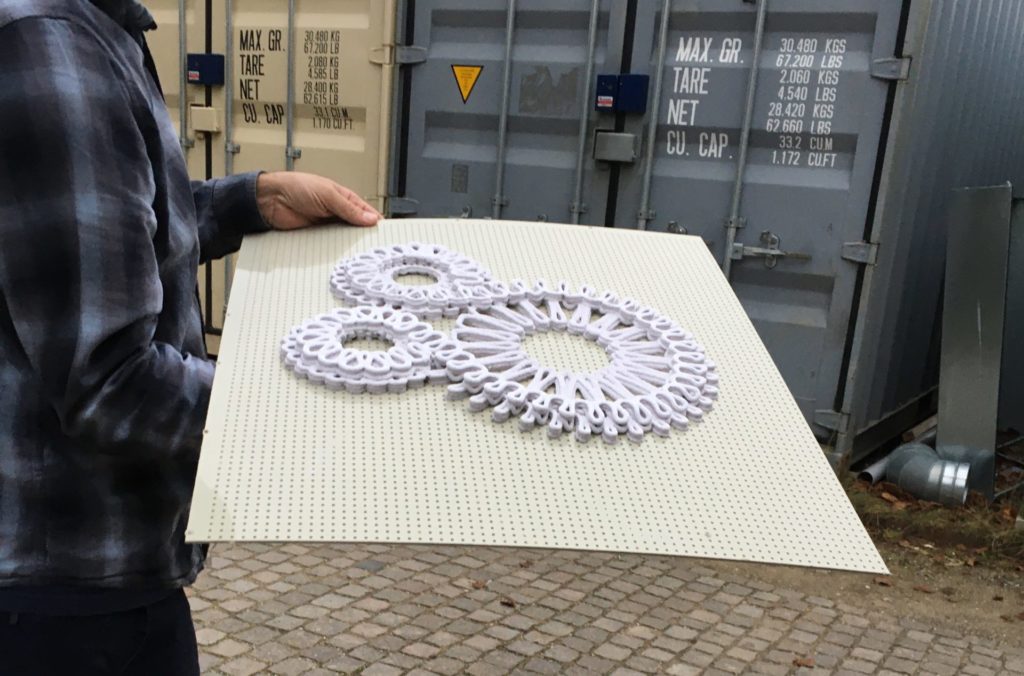
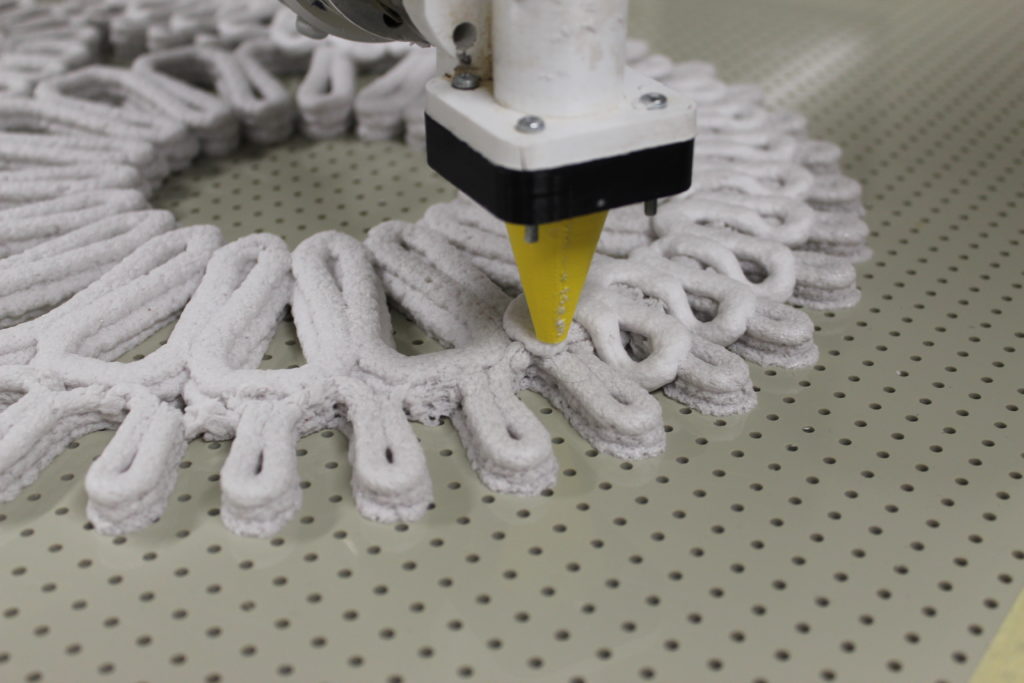
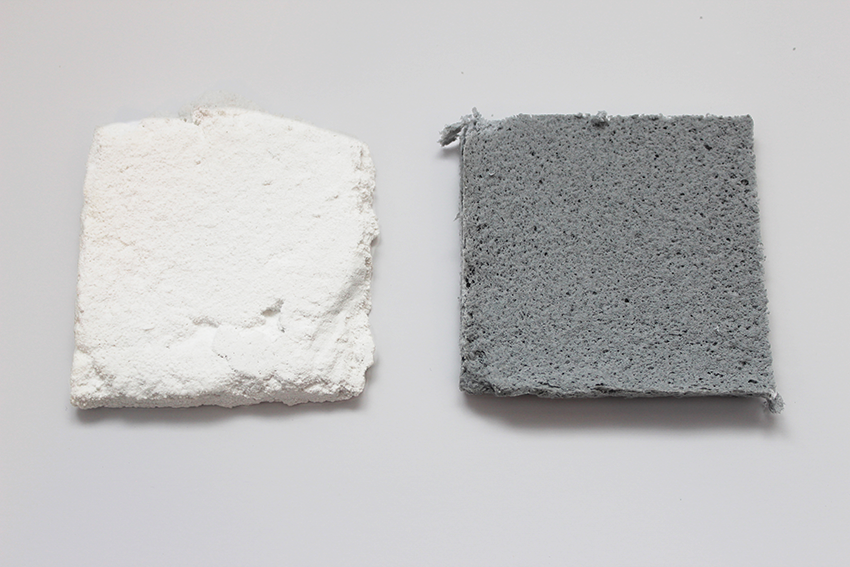
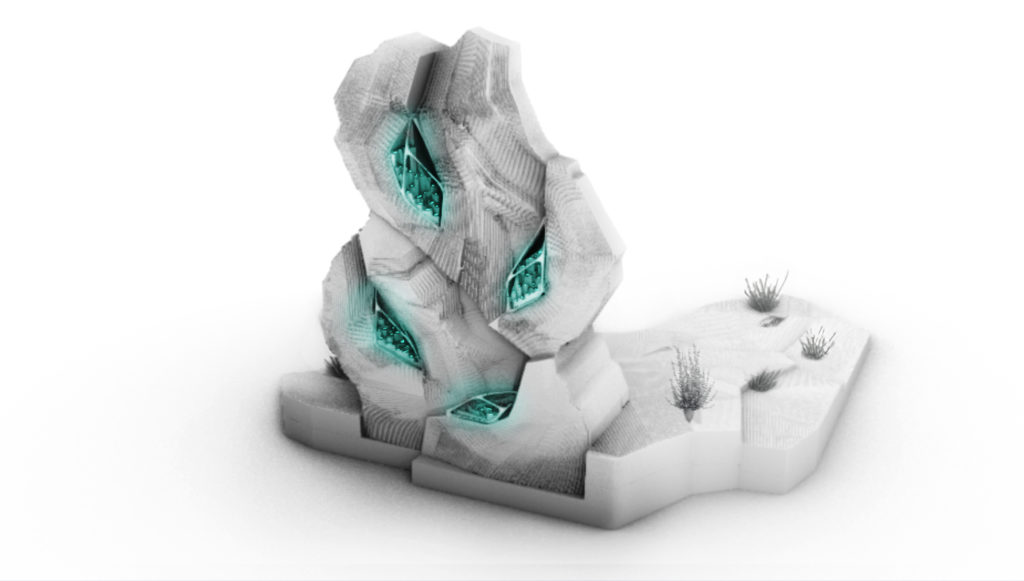
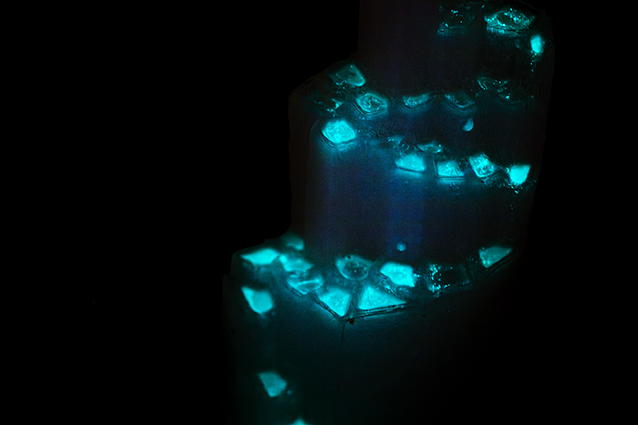
Related publications
- Mosse, A., Smith, C., 2025, Building furniture with bacteria: from bacillus to bench seats… [Podcast], 4th of February 2025, The Naked Scientists.
- Mosse, A., Ramsgaard Thomsen, M., Rennie, V., Suárez Zamora, D., Tyse, G., Tamke, M., 2024, Pepeyoca: Reconsidering The Bioreactor As A Bioluminescent Living Wall For Human-Bacterial Co-Inhabitation,In Herrera, P.C., Gómez, P., Estévez A.T., Torreblanca-Díaz, D.A. (Eds.), SIGraDI 2024 -Biodigital intelligent systems, 13-15th of November 2024, IBAG-UIC, Barcelona, Spain, pp. 2287-2299.
- Mosse, A., Rennie, V., Poudoulec, Q., Suárez Zamora, D., 2024, Paper waste grown as a biocalcified foam: perspectives from a bacterial and design viewpoint, Research Directions: Biotechnology Design, Cambridge University Press, pp. 1–24. doi: 10.1017/btd.2023.11
- Mosse, A.; Bassereau, J.F., 2022, ‘Material probes into paper waste as a bacterially-induced and 3D printed foam: combining biodesign and circular principles’,, In Frier Hvejsel, M., Cruz, P.J.S. (Eds.), Structures and Architecture. A viable urban perspective? Proceedings of ICSA 2022, 5th International conference on Structures & Architecture, Aalborg, 6-8th of July 2022, CRC Press.
- Tyse, G., Tamke, M., Ramsgaard Thomsen, M., Mosse, A., 2022, ‘Bioluminescent micro-architectures: planning design in time, an eco-metabolistic approach to biodesign’, Archit. Struct. Constr., Springer.
a 6-week project in collaboration with CITA, Royal Danish Academy, in the framework of the 2021 « matérialités futures » course, 4DTM, Ecole des Arts Décos
Building on the Imprimer la lumière research project, this course asks how architects and designers can work with bioluminescent micro-organism to develop biosourced materials informed by 3D printing for an architectural context. Bioluminescence is a chemical form of light produced by many marine organisms, some insects and mushrooms. While bioluminescent genes are used as markers in biology and medicine, recent experiments in the biodesign community have explored bioluminescence as an alternative to public and domestic lighting or as prospective garment finishing. By learning how to grow luminescent bacteria and investigating how they can be appropriated through 3D soft structures, primarily 3D printed, students questioned and explored both conceptually and materially how bioluminescent bacteria can be part of a strategy for a living architecture underpinned by 3D printing.
Students: Laura Bartier, Ines Bel Mokhtar, Maty Biayenda, Coraline Chancibot, Lisa Grand, Chloé Hercé, Alyssa Jos, Minji Koo, Julie Lagarde, Alexandra Lenartowicz, Eléonore Pierrard, April Saint-James
Coordination: Aurélie Mosse
Teaching team: Tony Jouanneau, Aurélie Mosse, Mette Ramsgaard Thomsen, Martin Tamke, Guro Tyse
Support: EUR ArTeC, Olivier Bienz, CITA
Related publication:
- Ramsgaard Thomsen, M., Tamke, M., Mosse, A., Sieder-Semlitsch, J., Bradshaw, H., Fabritius Buchwald, E., Mosshammer, M., 2022, ‘Imprimer la lumière: 3D printing bioluminescence for architectural materiality’, In: Yuan P.F., Chai H., Yan C., Leach N. (eds) Proceedings of the 2021 DigitalFUTURES. CDRF 2021. Springer, Singapore.
examines the making of a bio-luminescent micro architecture. The project is an interdisciplinary research enquiry sitting at the intersection of architecture, design and microbiology exploring the use of light-emitting bacteria as architectural materiality. The project is a collaboration between Soft Matters, Ensadlab, ENSAD and CITA .
By investigating the 3D printing of bioluminescent bacteria, we are questioning how architecture can be host for an ecology of species in symbiotic coexistence.
The project investigates the critical thinking and appropriation of living bacteria as an architectural materiality. To do so, we explore bioluminescence: a chemical form of light produced by many marine organisms, some insects and mushrooms. In ‘Imprimer la lumière’ we use bioluminescent bacteria to examine the metabolism of a living architecture.
The project is conceived over a series of experiments appropriating techniques for growing luminescent bacteria and developing the technologies for 3D printing the extrusion of their medium. 3D printing is explored as a means of liberating the forming processes of the medium to investigate how topology and surface treatment can drive the life cycles and therefore the light performance of the bacteria. In Imprimer la lumière, we use a collaborative robot with a bespoke micro dispenser. This allows us to address an architectural scale of fabrication distinct from dedicated bioprinter that operate at smaller scales. The building of new 3D printing methods for collaborative robots also allows us to interface with programmable design environments, allowing a higher degree of control and steering of both the design and the environment for the organisms.
Imprimer la lumière sits at the intersection of biodesign and digital fabrication. It opens up new perspectives for the design and appropriation of bioluminescence as an architectural materiality. At a conceptual level, the project asks what happens when the material of architecture becomes living: what are the new concepts, methods and technologies that are needed to design for and with living materials?
Main researchers: Aurélie Mosse, Mette Ramsgaard Thomsen, Martin Tamke
Funding: IFD sciences program of Institut Français du Danemark, Danish Arts Foundation, ArTeC.
Related teaching project: Crafting 3D bioluminescence
Related publications:
- Ramsgaard Thomsen, M., Tamke, M., ,Tyse, G., Mosse, A. , 2023, Imprimer la lumière: bacterial luminescence as a 3D-printed spiral micro-architecture, .able journal .
- Ramsgaard Thomsen, M., Tamke, M., Mosse, A., & Tyse, G, 2021. Designed Substrates For Living Architecture Performance – Imprimer La Lumière. In A. Tadeu & J. de Brito (Eds.), Proceedings of CEES 2021 – Construction, Energy Environment & Sustainability. Itecons, University of Coimbra, Portugal.
- Ramsgaard Thomsen, M., Tamke, M., Mosse, A., Sieder-Semlitsch, J., Bradshaw, H., Fabritius Buchwald, E., Mosshammer, M., 2022. ‘Imprimer la lumière: 3D printing bioluminescence for architectural materiality’, In: Yuan P.F., Chai H., Yan C., Leach N. (eds) Proceedings of the 2021 DigitalFUTURES. CDRF 2021. Springer, Singapore.
- Mosse, A., 2020. ‘Décors textiles: du déchet à la Biogée’, Revue Décor, Paris: Ensad, 4th of December 2020.
